Be Careful when Online Dating: Catfishing Lurks Everywhere!
Online dating has become one of the most popular ways to meet new people in recent years. The availability of dating apps and online dating websites has made it easier than ever to find potential partners. However, as with everything in life, there are risks to online dating of which you should be aware. One of them is what’s known as “catfishing.”
Popularity of Online Dating
The popularity of online dating has grown significantly in recent years. According to a study by the Pew Research Center, 15% of U.S. adults have tried online dating. This is double the number in 2005, and online dating has also gained popularity in Europe and other parts of the world.
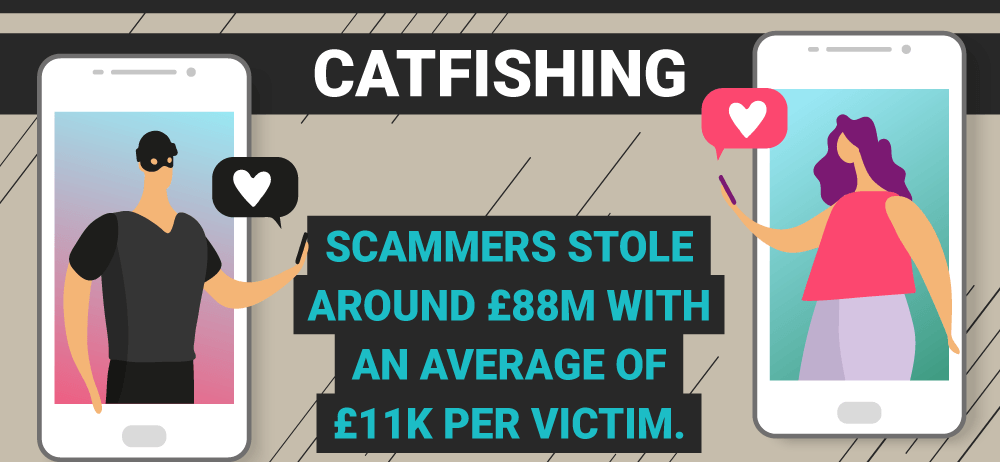
Risks of Online Dating
Although online dating can be a great way to meet potential partners, there are also risks to be aware of. Some of these risks include:
- Scams: there are many scammers who use online dating sites and apps to find their victims.
- Identity theft: by giving out personal information, one can increase the risk of becoming a victim of identity theft.
- Unpleasant encounters: Even if you are careful, you may encounter unpleasant or dangerous people.
What is Catfishing?
Catfishing is a form of fraud (similar to phishing) where scammers pretend to be someone else in order to find victims. They often do this by using social networks, dating apps or online dating websites to contact their victims. They do this by stealing photos and information from real people and then posing them as their own identities. The goal of the catfisher is to gain the victim’s trust and then ask them for money or personal information.
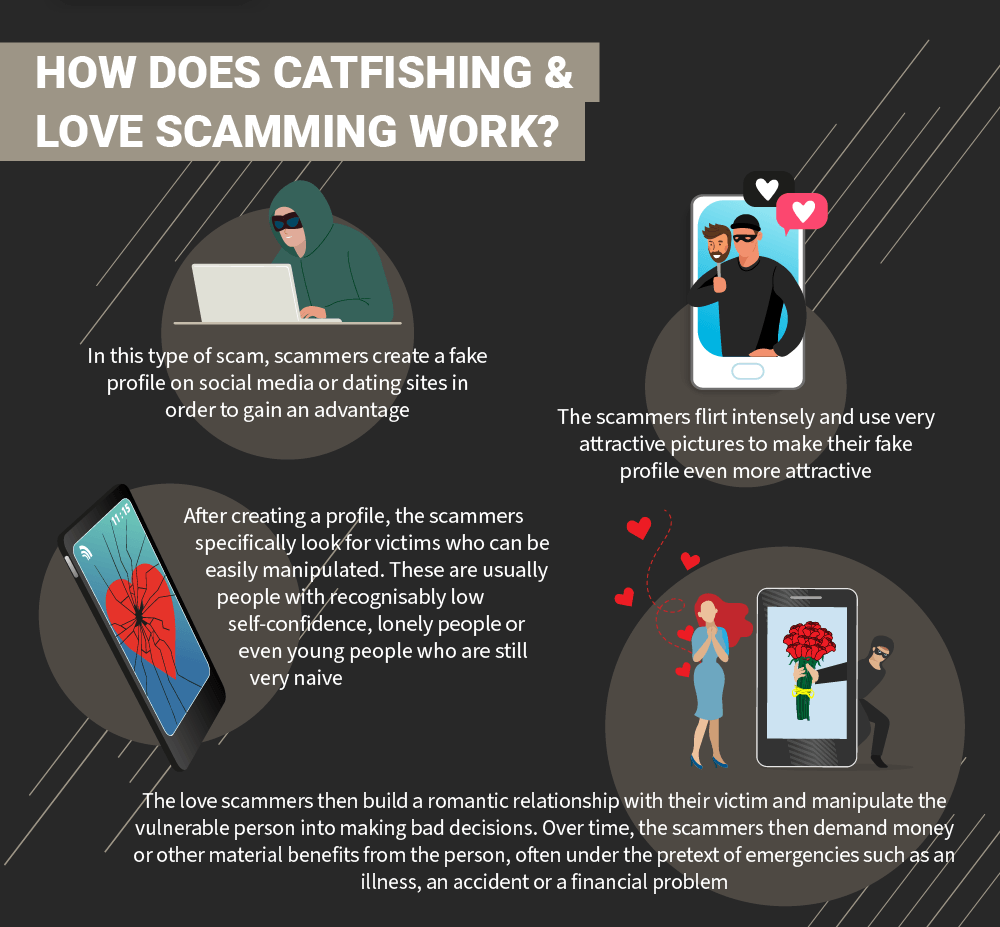
In the next sections, we will take a closer look at how to recognize a catfisher and how to protect yourself from them.
How Do I Recognize a Catfish?
There are some signs that can indicate that you are dealing with a catfisher. For example:
- The supposed partner is quick to give out personal information.
- The supposed partner quickly wants to enter into a closer relationship.
- The supposed partner asks for money or unexpectedly announces money problems.
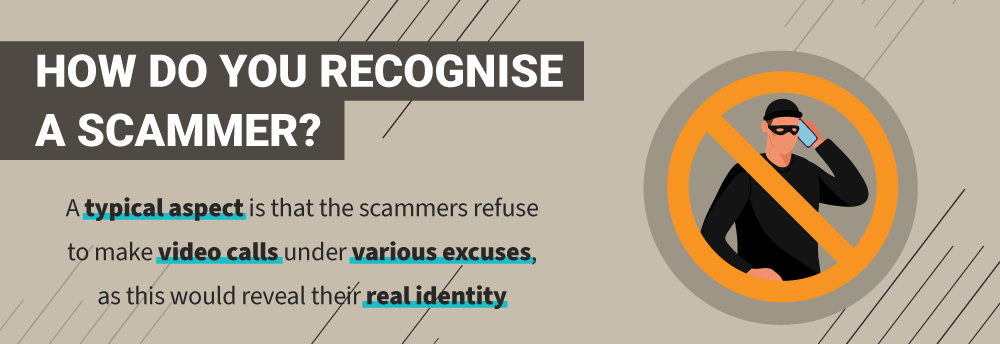
These traits are common with most fraudsters, whatever the scenario. We wrote a piece on spotting online casino scams, which illustrates this perfectly when highlighting the red flags of a fraudster in the gambling industry.
How Can You Protect Yourself?
Online dating can be a great way to meet new people, but there are also risks, especially related to catfishing. Fortunately, there are safeguards you can take to protect yourself from catfishing.
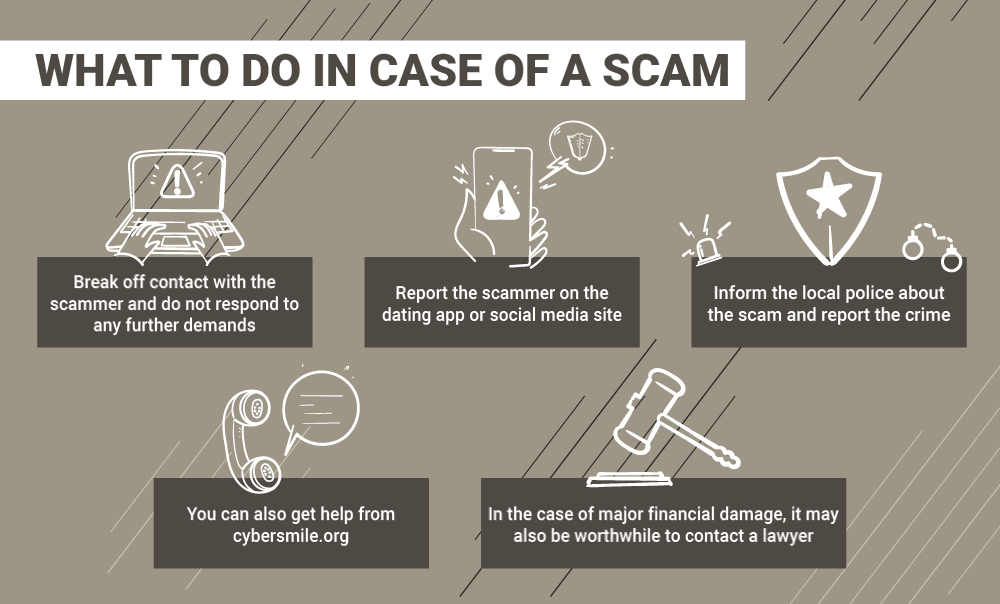
Be Careful about Giving Out Personal Information Quickly
One of the most important rules to follow when dating online is to be cautious when divulging personal information. It is important not to reveal private details about yourself too quickly, especially those that you might regret later. This includes information like your address, phone number, or even your full name. Instead, take time to get to know someone better before revealing private information.
Distrusting Requests for Money Transfers
A common sign of catfishing is that the scammer asks for money. This can take the form of direct requests for money transfers or excuses for unexpected money problems. If someone you met online asks you for money, you should be extra careful. It is important to remain suspicious and never transfer money to someone you do not know personally.
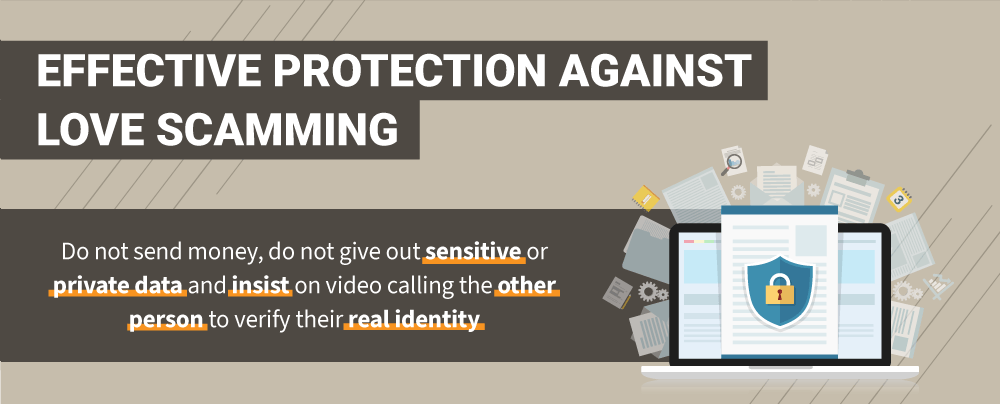
Use of Google Image Search
Another way to protect yourself from catfishing is to use Google Image Search. This allows you to upload a photo of someone you communicate with online and see where else it has been used on the Internet. If you notice that the photo is being used on multiple websites, especially social networking or dating sites, you should be extra careful. This could be a sign that the person you are communicating with is not who they say they are.
Use of Verification Features on Dating Apps/Websites
Some dating apps and websites offer verification features that allow you to check a person’s identity. These features can include submitting a selfie with a specific code or a copy of an ID card. Use these features when they are available to ensure that the person you are communicating with is indeed who they say they are.
This advice on verification can stretch to other situations too. For example, we discuss fake apps and websites and how to avoid such scams in the casino industry in this blog post. You need to be vigilant and be sure the app or website you are accessing is legitimate.
Conclusion
Online dating is a great way to meet new people, but there are risks, especially in terms of catfishing. Catfishing is a form of fraud where someone pretends to be someone else in order to gain personal information or money.
We’ve discussed some of the risks involved in online dating and how to protect yourself from catfishing. Some of the key points are:
- Be wary of giving out personal information quickly
- Distrusting requests for money transfers
- Use of Google image search
- Use of verification features on dating apps/sites
To protect yourself from catfishing, we recommend the following:
- Be careful with personal information and don’t give it out too quickly.
- Be suspicious when someone asks for money.
- Use Google Image Search to make sure the profile picture is real.
- Use verification features on dating apps and websites when available.
- Take time to get to know someone better before committing to a date.
- Be alert to sudden changes in the behaviour or tone of the person you are talking to.
- Use the resources provided by dating apps and websites to ensure your safety.
